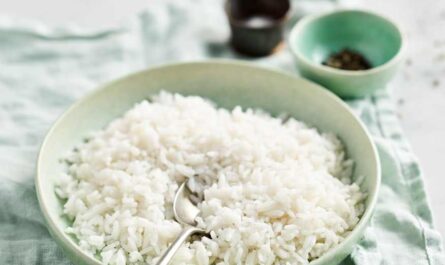Welcome to the Sushi Rice Fan Guide, a comprehensive journey into the world of sushi rice, the cornerstone of sushi-making. For sushi lovers, understanding the nuances of sushi rice is essential. This guide serves as your ultimate resource for mastering the art of perfect sushi. Whether you’re a seasoned chef or a home cook, this guide will elevate your sushi-making skills to new heights.

The Basics of Sushi Rice
Sushi rice, known as shari or sushi-meshi in Japanese, is a crucial component of any sushi dish. It is made from short-grain rice, which is known for its sticky texture. The stickiness of the rice is essential for holding the sushi together. To achieve this texture, sushi rice is seasoned with a mixture of vinegar, sugar, and salt, giving it a unique flavor profile that balances the ingredients in sushi.
Choosing the Right Rice
The key to great sushi is starting with the right type of rice. For the best results, use Japanese short-grain rice, which is specifically cultivated for sushi. Some popular brands include Koshihikari and Akitakomachi. These varieties are renowned for their perfect balance of starch and moisture, resulting in the ideal sushi rice texture. For more information on different types of rice, check out this rice types guide.
Preparing Sushi Rice
Washing the Rice
Start by washing the rice thoroughly. This step is crucial for removing excess starch, which can cause the rice to become overly sticky. Rinse the rice in cold water until the water runs clear.
Cooking the Rice
Use a rice cooker for even cooking. Follow the manufacturer’s instructions, using the appropriate water-to-rice ratio. Once the rice is cooked, allow it to rest for at least 10 minutes to absorb any remaining moisture.
Seasoning the Rice
While the rice is still warm, gently fold in a mixture of rice vinegar, sugar, and salt. Use a wooden spatula to avoid crushing the grains. This seasoning process is what gives sushi rice its distinctive flavor.
Common Mistakes and How to Avoid Them
Overcooking the Rice
One of the most common mistakes is overcooking the rice, which can lead to a mushy texture. To avoid this, ensure you’re using the correct rice-to-water ratio and follow the cooking instructions carefully.
Improper Seasoning
Another mistake is improper seasoning. Be sure to mix the vinegar seasoning thoroughly and evenly throughout the rice. This ensures each grain is flavored perfectly.
Exploring Sushi Varieties
Sushi is a diverse and evolving cuisine, with countless varieties to explore. From the traditional nigiri and maki rolls to modern sushi bowls, each style presents its own unique challenges and rewards. To dive deeper into the origins and evolution of sushi, visit the origin of sushi.
Sushi and Rice Pairings
Pairing sushi with the right ingredients can enhance the overall dining experience. From fresh fish to pickled vegetables, the possibilities are endless. Experiment with different combinations to find your perfect match.
The Role of Sushi Rice in Japanese Culture
Sushi rice is more than just a culinary ingredient; it is a cultural icon. In Japan, rice represents prosperity and tradition. Sushi, as a whole, embodies the country’s rich culinary heritage. To understand more about the cultural significance, you can explore the tea ceremony rice origins.

Frequently Asked Questions
What is the best rice for sushi?
Japanese short-grain rice is the best choice for sushi due to its perfect balance of starch and moisture.
Can I use other types of rice?
While it’s possible, other types of rice might not provide the same texture and taste as traditional sushi rice.
How do I store sushi rice?
Store cooked sushi rice in an airtight container at room temperature for up to 24 hours. Avoid refrigerating as it can alter the texture.
For more tips on maintaining sushi rice quality, see our guide on yellowing sushi rice.
This article contains affiliate links. We may earn a commission at no extra cost to you.




